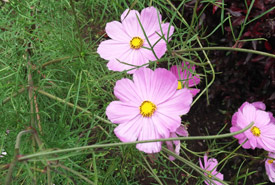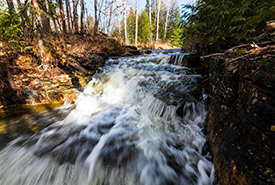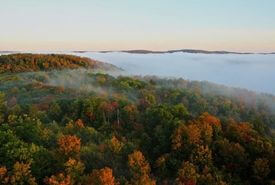NCC: Land Lines – Isolating the melody amidst a cacophony: How science writers aim to anchor their readers in their own experiences

Good writing in science communications is more than just piling on the facts (Photo by Photo by Tatiana Syrikova from Pexels)
I used to love winding up the Beatrix Potter music box on my childhood dresser to hear the metal tines pluck out Hoagy Carmichael’s 1930 fox trot song, “Up a Lazy River.” I had no idea who Hoagy Carmichael was at the time, but I do remember being impressed at how some obvious genius had squeezed the musical intricacy of a great tune into the tinny notes that echoed through the porcelain ornament.
Good science writing requires a similar genius. A strong science communicator — something I’m working to become — boils big ideas down to recognizable concepts and experiences for their audiences. Just like my music box carried only the melody of its original song, an accessible piece of science writing needs to convey all the relevant bits of information without cluttering its sentences with details the reader doesn’t need, lest they become lost in the particulars and forget the point of the story.
Imagine you’re a reporter writing about a car wreck, but your readers don’t know what a car is. Do you start by explaining the internal combustion engine, or do you go back further to unfurl the story of the wheel? It’s easy to get lost in the details at the expense of your story. As science author Carl Zimmer puts it in The Craft of Science Writing: “If you spend all your time explaining rather than telling a story or advancing an argument, the structure of your writing will collapse under that explanatory weight.”
(In his feedback to a story I wrote about cannabis legalization in Canada in 2017, a journalism professor of mine wrote something like, “In trying to seize all the details of the policies, you seem to have lost your grasp on your ability to write.” It’s the best feedback I’ve ever been given.)

Pink coreopsis (Photo by Yercaud Elango/Wikimedia Commons)
In my job as national media relations manager with the Nature Conservancy of Canada (NCC), I work with colleagues whose days in the field are filled with tools and species whose names I can hardly pronounce, let alone explain in basic terms. But are these names relevant to a story about how protecting a wetland may help a region be more resistant to floods, or how a single butterfly sighting can signal a greater story of ecosystem recovery? No, at least not for average newspaper readers.
“Memorable science stories captivate not only because they hold our intellectual attention, but also because they grab us by the senses, weaving smell, touch and taste through abstract concepts,” writes science journalist Jyoti Madhusoodanan in The Craft of Science Writing. In the same book, Maryn McKenna describes the storyteller’s challenge as climbing up and down a ladder: at the top and out of reach are grand notions of things like biodiversity and climate change. At the bottom are the tangible ways we sense these things: the chorus of songbirds, insects and frogs that greets the sunrise in a healthy marsh, a flooded neighbourhood and a beloved beach washed away. Good communicators write about the top-rung ideas by using ground-level details.
To do this scientific translation, I ask my colleagues to describe what they see, smell and hear in the spaces we’re protecting. I ask them to compare their stewardship work to chores we all do in our own homes. These tools, like metaphors and sensory details, help anchor big concepts and foreign places in the minds and memories of readers.

Waterfall, Vidal Bay, ON (Photo by Esme Batten/NCC staff)
When I pitch property announcement and stewardship stories to newsrooms, I aim to demonstrate how exactly a new plot of conservation land or a wetland restoration will impact local residents. What will they get to hear from the birds, smell from the plants and benefit from? Because, NCC’s work isn’t meant to be restricted to biology department lecture halls and policy documents. Really, we’re telling stories about people and the places they love — the same places that nurture them, feed them, entertain them and protect them.
Like music, where not everyone can write or recognize a timeless tune, we can still appreciate how a song makes us feel. Knowing that, as a communicator I try to not get lost in the “what?” — meaning, how exactly the science works. Instead, I aim to illustrate the “why?”: why exactly you and I should care about these natural places and the creatures that call them home.




